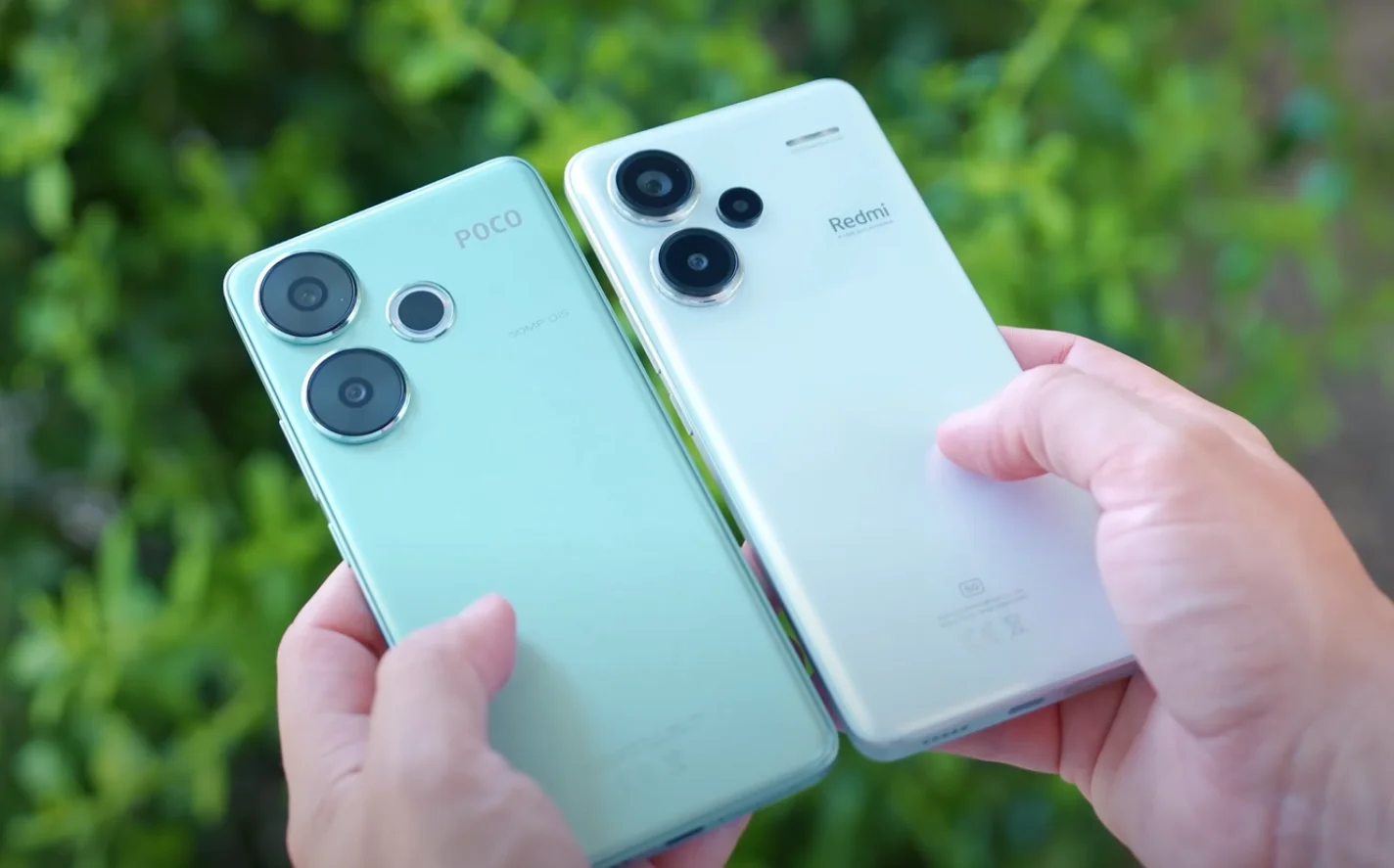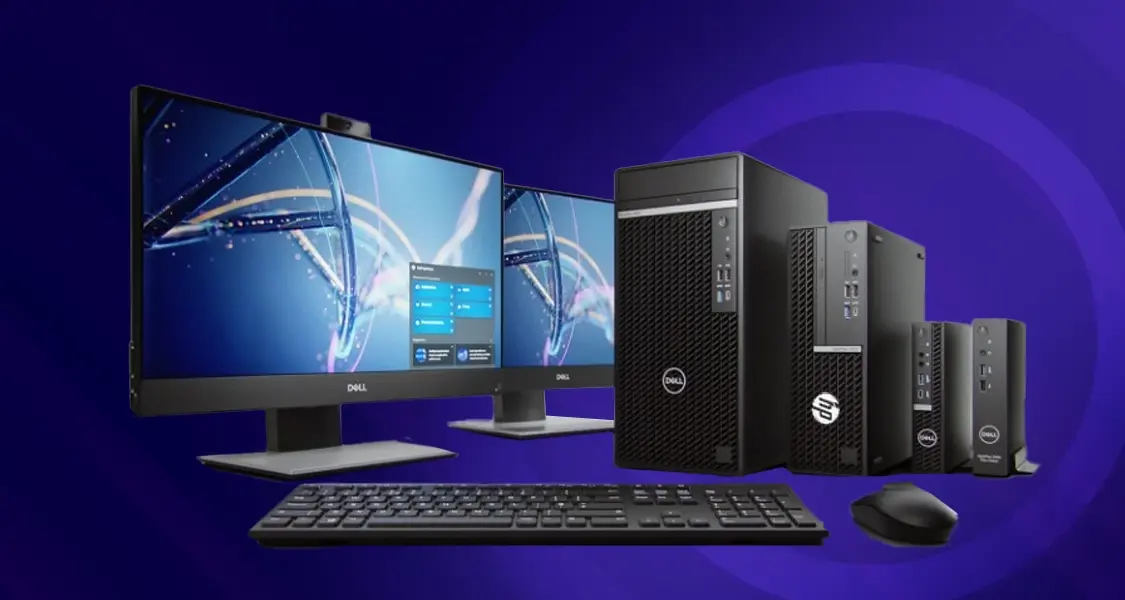POCO F6 vs Xiaomi Redmi Note 13 Pro+ : Comparison
Xiaomi Redmi and Poco phones create a lot of confusion with multiple versions of one phone. It starts with the base variants like non-Pro 4G and 5G, Pro 4G and 5G and a 5G Pro+. We’re saving the top of the line for last – Redmi Note 13 Pro+. It is the most impressive and equipped variant in the Redmi Note 13 line-up. On the other side, we have a POCO F6 that is giving a strong competition to the Pro+ on different fronts.
In this detailed comparison, we’ll compare both phones and let you decide the best. The metrics on which these phones will be compared include: design, build and handling, software and performance, camera, photo and video quality, and display, battery life and audio. We’ll conclude the comparison with a final verdict helping you decide the phone of your needs.
Design, Build Quality and Handling
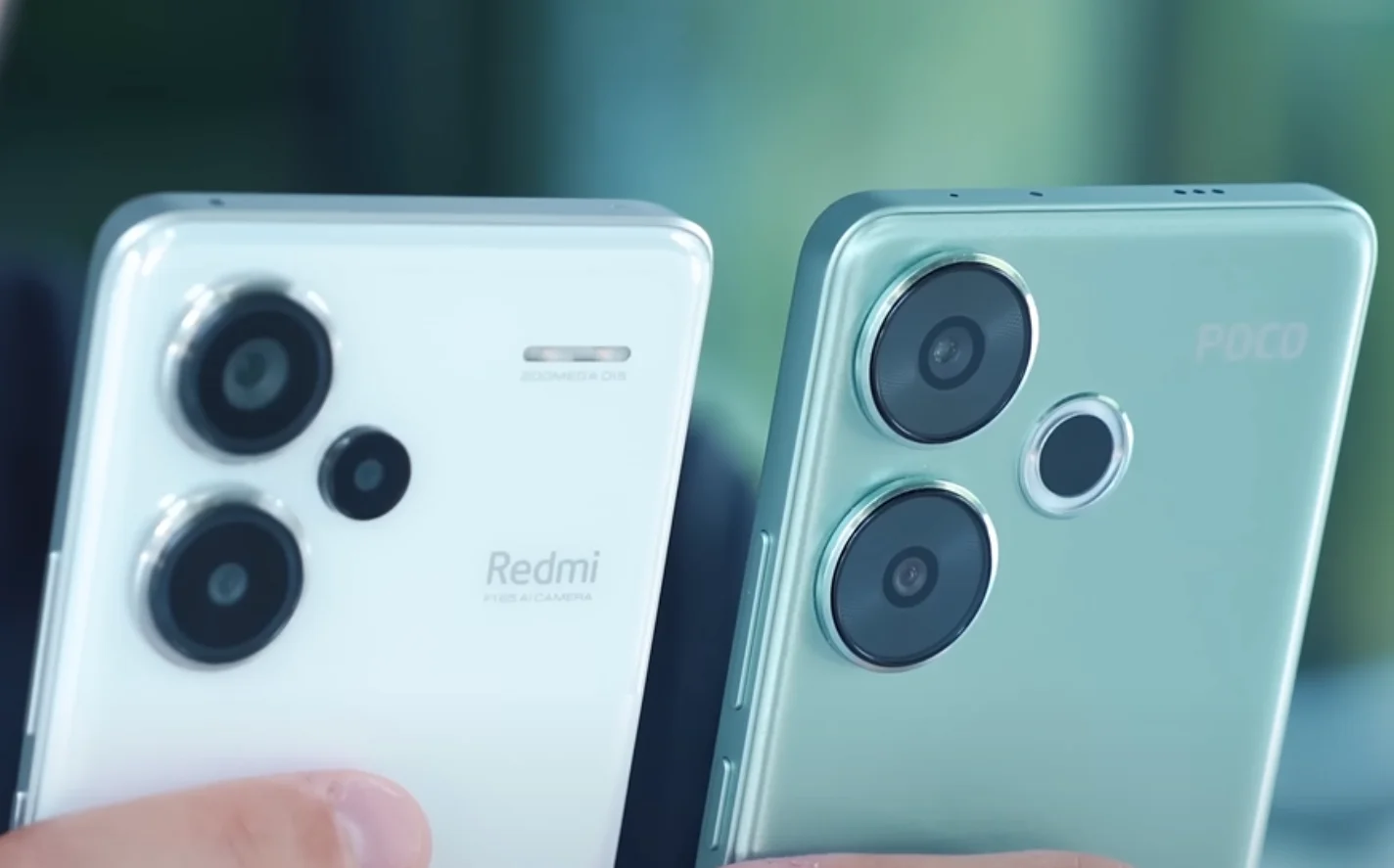
The Xiaomi Redmi Note 13 Pro+ is similar to its other siblings but it comes with rear sides and curved front. Its premium look is a plus with another key feature that is IP68 ingress protection. Its frame is thinner than the other variants. Moreover, it also comes with curved Gorilla Glass Victus and a curved glass on the back as well. Available colors are Moonlight White, Midnight Black and Aurora Purple. The screen is easily the best feature to choose out of many and AMOLED looks colorful and bright. An optical under-display fingerprint sensor is superb with fast speed and convenience. All these features combined make Redmi Note 13 Pro+ the most beautiful Note 13, well built and protected.
With only a few notable changes, POCO F6 does not make a huge difference from its previous version F5. Camera ring size is bigger, LED flash replaces the useless third camera and the overall feel in the hand remains the same. Plastic body continues but the display also gets the Gorilla Glass Victus protection similar to Redmi 13 Pro+. The phone feels light in the hands. It has been launched in three impressive colors: Green, Black and Titanium. Under-display fingerprint scanner replaces the old side-mounted fingerprint.
Differences in Design, Build and Handling
| Redmi Note 13 Pro+ | POCO F6 | |
|---|---|---|
| Type | AMOLED, 68B colors, 120Hz | AMOLED, 68B colors, 120Hz |
| Size | 6.67 inches, 1220x2712px resolution, 20.01:9 aspect ratio | 6.67 inches, 1220x2712px resolution, 20.01:9 aspect ratio |
| Protection | Gorilla Glass Victus | Gorilla Glass Victus |
Software and Performance
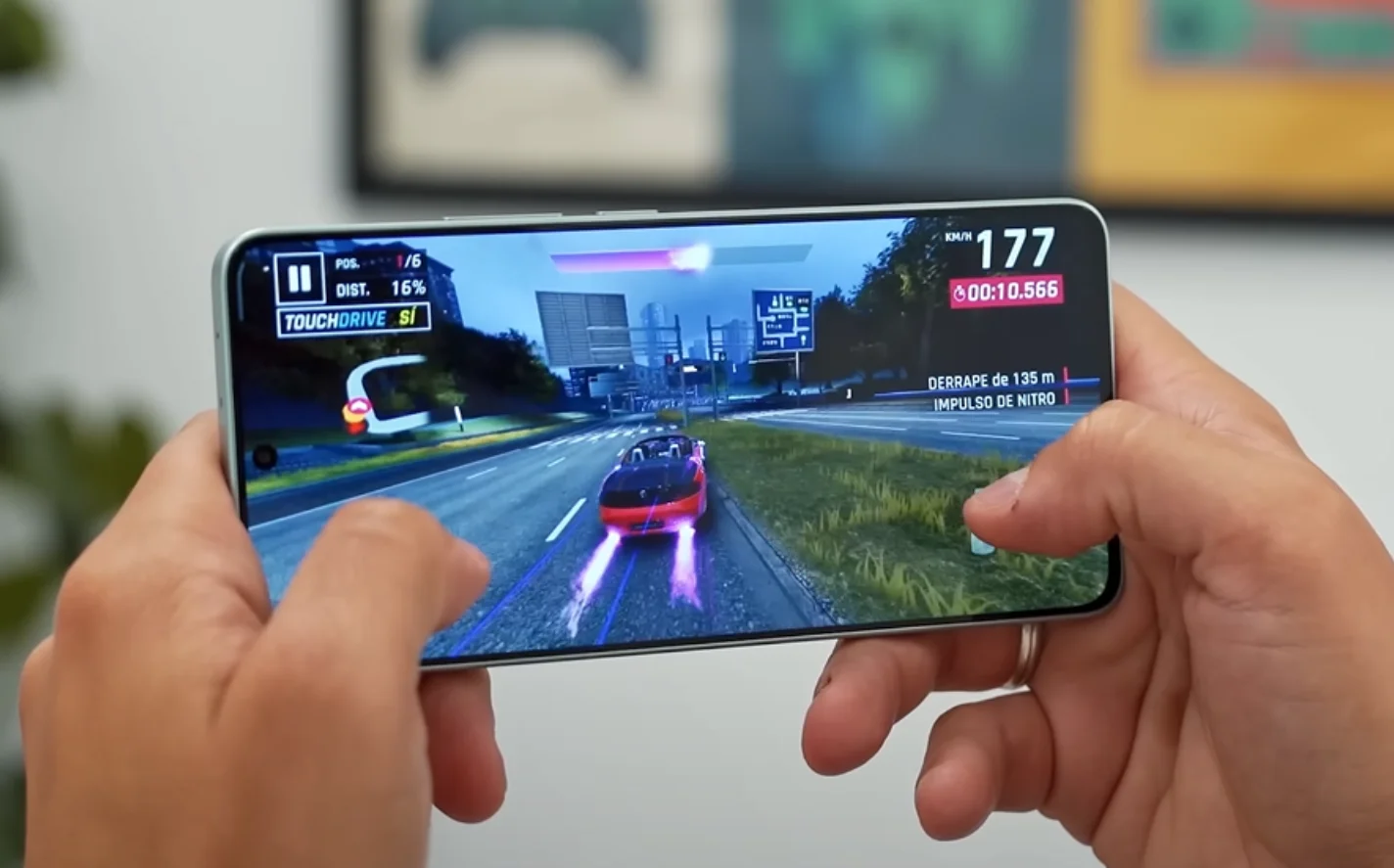
The Redmi Note 13 Pro+ operates on MIUI 14 on top of Android 13. An upgrade to HyperOS will be made later on. Some ads are there but can be disabled in the settings. The Dimensity 7200 Ultra chipset by MediaTek makes the 13 Pro+ good for gaming and casual scrolling throughout the day. According to the GSMArena testing, Redmi Note 13 Pro+ is one of the fastest in its class and price range.
POCO F6 takes the lead of Redmi Note 13 Pro+ with the latest installment of HyperOS and Android 14. It handles the UI-heavy HyperOS with ease and doesn’t slow down. F6 is one of the first Snapdragon 8s Gen 3-powered phones, a unique selling point indeed. The memory options are limited with 8GB/256GB and 12GB/512GB.
Differences in Design, Build and Handling
| Redmi Note 13 Pro+ | POCO F6 | |
|---|---|---|
| OS | Android 13, MIUI 14 | Android 14, HyperOS |
| Chipset | Mediatek Dimensity 7200 Ultra (4 nm) | Qualcomm SM8635 Snapdragon 8s Gen 3 (4 nm) |
| Benchmarks | AnTuTu: 683899 (v9), 779812 (v10) GeekBench: 2353 (v5), 2597 (v6) |
AnTuTu: 1497886 (v10) GeekBench: 4883 (v6) |
Camera, Photo and Video

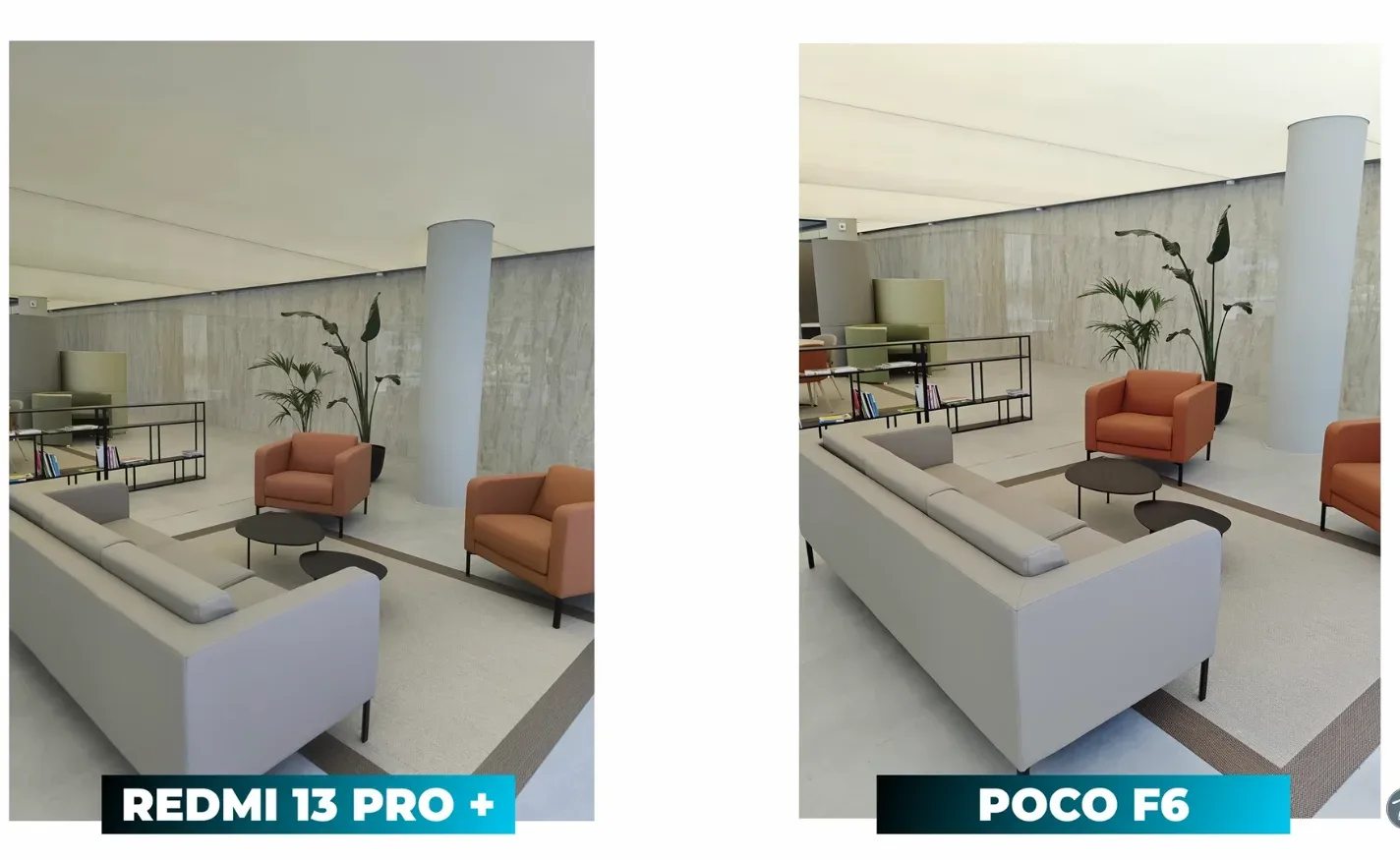
Camera setup of Redmi Note 13 Pro+ is similar to the standard Redmi Note 13 Pro 5G. Three cameras on the back: 200MP primary, 8MP ultrawide and a 2MP macro. A selfie camera of 16MP is also part of the camera gear. Daylight photo quality is decent with improvements in detail, colors and contrast from the previous model. The 8MP ultrawide photos are also good but not impressive. The 16MP selfies look pleasant with good dynamic range. Low light photos are also detail-rich and boast decent color saturation. Video quality is great with the Redmi Note 13 Pro+ supporting 4K@30fps on the primary camera. The details are satisfactory with good colors and low noise.
POCO F6 introduces new changes to its camera system. F6 boasts both the new main camera and selfie camera with notable upgrades. Primary camera is a 50 MP Sony sensor. Other camera details can be seen in the spec table below. Main camera in daylight performs well and keeps the noise low and dynamic range looks awesome. Low light photos are impressive and don’t disappoint. Colors are good, noise is decent and shadows are bright and well-contained. It can record video upto 4K60 with its primary camera with solid results.
Differences in Camera, Photo and Video
| Redmi Note 13 Pro+ | POCO F6 | |
|---|---|---|
| Main Camera | Wide (main): 200 MP, f/1.7, 23mm, 1/1.4″, 0.56µm, multi-directional PDAF, OIS; Ultra wide angle: 8 MP, f/2.2, 120˚; Macro: 2 MP, f/2.4 | Wide (main): 50 MP, f/1.6, 1/1.95″, 0.8µm, dual pixel PDAF, OIS; Ultra wide angle: 8 MP, 1/4.0″, 1.12µm |
| Video | Rear camera: 4K@24/30fps, 1080p@30/60/120fps, gyro-EIS; Front camera: 1080p@30/60fps. | Rear camera: 4K@30/60fps, 1080p@30/60/120/240fps, gyro-EIS; Front camera: 1080p@30/60fps. |
| Selfie Camera | 16 MP, f/2.4, (wide) | 20 MP, f/2.2, (wide), 0.8µm |
Display, Battery Life and Audio

The Redmi Note 13 Pro+ is equipped with a 6.67 inch AMOLED display with protection of curved Gorilla Glass Victus. Moreover, the panel is flat with 120Hz refresh rate and HDR10+ and Dolby Vision support. Xiaomi’s specs sheet claims a peak brightness up to 1800 nits. It is powered by a 5,000mAh battery. It performs ordinary on web and gaming tests but well on video and call modes with Active Use Score of 10:38 hrs. On the charging front, it supports 120W Supercharging and comes with a charger and cable in the box. Stereo speaker system in Note 13 Pro+ is impressive with speakers placed at top and bottom producing overall good sound.
POCO F6 comes with a similar screen as last year with a bumped up resolution. Other display specs are 120Hz refresh rate, HDR10+ and Dolby Vision Support. Refresh rate comes with three options – 60Hz, 120Hz and Default. Battery life comes with a standard 5,000 mAh battery. Active Use Score stands at 10:36h, that is pretty decent. On the charging speed front, a 90W charger is included in the box and in 15 minutes you can charge half the battery. The handset offers above average loudness and can be regarded as very good. The sound is clean and the bass becomes prominent on all volume levels.
Final Rundown
Xiaomi Redmi Note 13 Pro+ Pros & Cons
| Pros | Cons |
|---|---|
| IP68-rated glass design, matte rear panel. | Unimpressive battery life. |
| Bright AMOLED, 1220p resolution, 12-bit color depth, color accurate. | The camera processing could have been a notch more natural. |
| Super-fast charging | |
| Loud stereo speakers with good audio. | |
| Very good photo and video quality across the board. |
POCO F6 Pros & Cons
| Pros | Cons |
|---|---|
| Excellent AMOLED display with HDR10+ and Dolby Vision | Battery life leaves more to be desired. |
| The Snapdragon 8s Gen 3 provides unmatched performance in this class. | The 8MP ultrawide camera could be better. |
| Super-fast charging | |
| Very good stereo speaker setup. | |
| Great main camera performance. |
TechBazaar Verdict
Redmi Note 13 Pro+
The Redmi Note 13 Pro+ is the best Redmi Note of the year, offering a top-notch design, display, chipset, and the fastest charging in its class. The curved glass design, IP68 protection, high-res AMOLED, and powerful Dimensity 7200 Ultra chipset make it stand out. While the battery life is underwhelming and the camera processing needs minor improvements, it remains an excellent all-rounder with a competitive price.
Poco F6
The Poco F6, while not a true flagship killer, excels in multimedia and gaming with its excellent display, speakers, unmatched performance, and fast charging. However, its battery life and camera quality are mediocre.. The current price might not be an immediate recommendation, but as the price drops, it will become a more attractive option.
Let us know in the comments which one did you buy and why?

